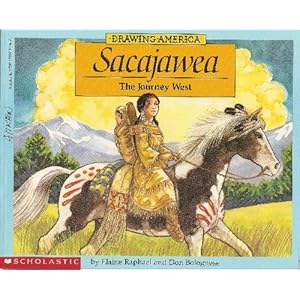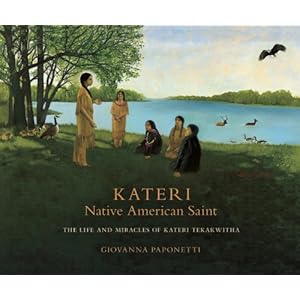I’ve been working very hard with my autistic son on reading comprehension this school year. We have been working on a method of recalling, retelling, retaining….and then later: recalling, retelling, retaining…..you get the picture!
How this works is we choose certain literature pieces, and he reads a few sentences, then I immediately cover them up with my hand and say: what was that telling? what was it about? …and give him time to attempt recall. It seems so simple to a neuro-typical, or average learner….but terribly hard and frustrating for those with various disorders. My son’s hyperlexia had gotten in the way of understanding what he was reading because he can read far above grade level and has a large vocabulary. None of that means he has the understanding that goes with it.
As we practiced this method the entire school season thus far, we have seen a lot of improvement – definite progress, from a couple sentences to a whole paragraph, to a few paragraphs. Now he gets it. So we continue on. Happily, he is also now interested in reading short books as he has the tools to more understanding. There is a natural “pause” in our minds as we read, where we absorb what a few sentences have said – we generally don’t pay any attention to that pause mechanism, it just flows with us and seems to be a built-in process. But for those with disorders, in my son’s case the jumble of processing due to autism, he has to learn the “pause”; for him it is not built-in, not natural. But making it a habit however, by method and practice, it will become second nature to him. It has taken root and is growing. Now he has been able to read “Stuart Little” recently, and is enjoying and telling about it.

In the meantime, we used certain books to facilitate this method – the few “Drawing America” books that are published, that included one of Pocahantas, and Sacajawea, as well as a few others in the series and then a different book altogether called Squanto:Friend of the Pilgrims, I mostly turned to these books because of early American history study; they fit in nicely with our studies, and the Drawing America books also provided some art activities.
HERE’S MY REVELATION: I had NO IDEA how sad the lives of these native tribal Indians would be – I mean truly sad and so I can not leave this post without adding some commentary regarding the reading material we used.
I had never really read Squanto, but my three older children before this son had. This was the first time I had read this book – out of necessity – with a child of mine. What a shocker! How sad! Although Squanto wasn’t kidnapped like many Indians were, he went willingly to the white man’s land of London. But when he was there for five years he yearned to return to the New World, and when he finally was able to…and was only within a few miles of walking distance from his village, he was captured…..taken by another sea captain (Hunt) and sold as a slave. So many years went by……when Squanto was finally able to return to his home again…and it was gone. His people, his parents and family all gone due to a sickness that swept through the village. He was the lone survivor of the tribe Paxtuxet. All those years he yearned to see his family again……and was so close…..
So, very sad indeed. And then Sacajawea was stolen away from her family and Shoshoni tribe by raiders at a young age and made a slave. Eventually a French Canadian fur trader bought her as his bride at the age of 13. Her life did not seem as dreadful as Squanto…she was able to go with the Lewis and Clark expedition as a guide and she saw her people and her brother again. It was a bittersweet reunion.

It just reminds me of how sad it has been that mankind has enslaved other human beings to do their work and bidding. And to read these accounts just brings it more to light. May these accounts never be buried.
These stories led way to a wonderful discussion all year about Christian love and human kindness, dignity and respect. We spoke of Mother Teresa, and Maximilian Kolbe, and of course Christ himself and how we are to treat those created in the image and likeness of God. How we do not use or abuse other human beings…those weak or innocent, those different than our own culture; those helpless, like the unborn.
We know Blessed Kateri Tekawitha is destined to be a saint, and I know Squanto did not profess Christianity that we know of….but how that man suffered at the hands of other men, and how he never retaliated and kept a loving and Christian spirit about him, always ready to help, even those who hurt him, is certainly the makings of Saint.
I am grateful that God gave us these few stories this year to use for the method of comprehension, but more grateful to know the stories in a very deep and heartfelt way.


2 comments:
This post reminded me a lot of my recent reading of Roots. A similar story in many ways. What struck me in your retelling of Blessed Kateri, Squanto, etc. is the ability to keep charity and humanity in one's focus. In many ways, the main character in Roots, Kunte Kinte was not portrayed as having done this at all. He was Muslim, and felt called to kill whomever he could, and tried to do so on several occassions. Granted, he was fighting for his life. But, there was never a thought in his head at any point of having charitable thoughts towards any of the people in the story, not even the woman he would eventually marry, until he decided to marry her. I think perhaps this demonstrates an entirely different mindset, Christian vs. Islamic. Hmmm - sure to cause a controversy.
Megan, that is good insight. It's been a long time since I've read Roots and how interesting to draw that contrast. I am still really sad but admirable about Squanto! What a life, and in the end...after all he had endured patiently, he helped the Pilgrims survive. Amazing.
Post a Comment